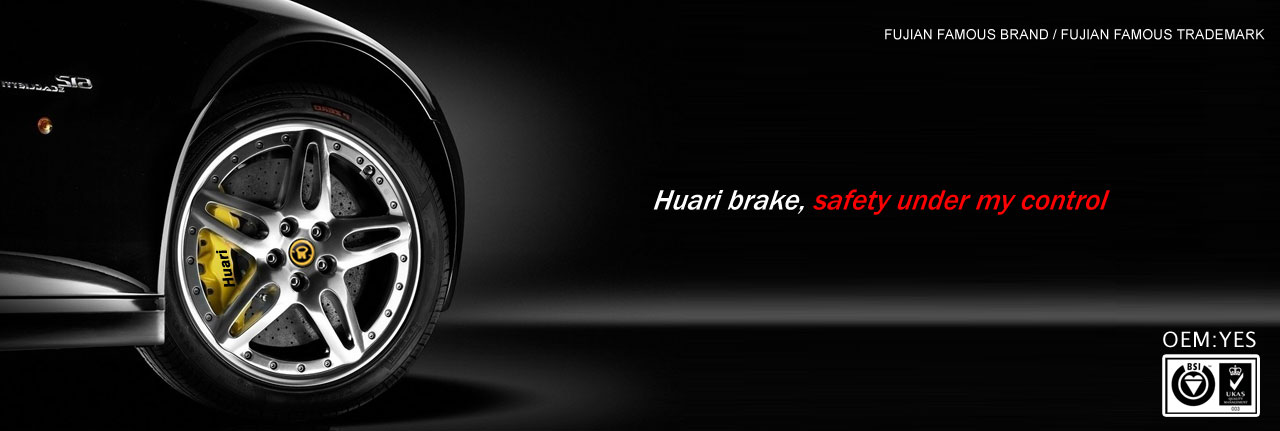Disc brake History
Early experiments
Development of disc brakes began in England in the 1890s.
The first caliper-type automobile disc brake was patented by Frederick William Lanchester in his Birmingham factory in 1902 and used successfully on Lanchester cars. However, the limited choice of metals in this period meant that he had to use copper as the braking medium acting on the disc. The poor state of the roads at this time, no more than dusty, rough tracks, meant the copper wore quickly making the system impractical.
The American Crosley Hot Shot is often given credit for the first production disc brakes. For six months in 1950, Crosley built a car with these brakes, then returned to drum brakes. Lack of sufficient research caused reliability problems, such as sticking and corrosion, especially in regions using salt on winter roads. Drum brake conversions for Hot Shots were quite popular. The Crosley disc was a Goodyear development, a caliper type with ventilated disc, originally designed for aircraft applications.
Chrysler developed a unique braking system, offered from 1949 to 1953. Instead of the disc with caliper squeezing on it, this system used twin expanding discs that rubbed against the inner surface of a cast-iron brake drum, which doubled as the brake housing. The discs spread apart to create friction against the inner drum surface through the action of standard wheel cylinders. Because of the expense, the brakes were only standard on the Chrysler Crown and the Town and Country Newport in 1950. They were optional, however, on other Chryslers, priced around $400, at a time when an entire Crosley Hot Shot retailed for $935. This four-wheel disc brake system was built by Auto Specialties Manufacturing Company (Ausco) of St. Joseph, Michigan, under patents of inventor H.L. Lambert, and was first tested on a 1939 Plymouth. Chrysler discs were "self energizing," in that some of the braking energy itself contributed to the braking effort. This was accomplished by small balls set into oval holes leading to the brake surface.When the disc made initial contact with the friction surface, the balls would be forced up the holes forcing the discs further apart and augmenting the braking energy. This made for lighter braking pressure than with calipers, avoided brake fade, promoted cooler running, and provided one-third more friction surface than standard Chrysler twelve-inch drums. Today's owners consider the Ausco-Lambert very reliable and powerful, but admit its grabbiness and sensitivity.
Racing breakthrough
Reliable caliper-type disc brakes first appeared in 1953 on the Jaguar C-Type racing car. These brakes helped the company to win the 1953 24 Hours of Le Mans,developed in the UK by Dunlop. That same year, the aluminum bodied Austin-Healey 100S, of which 50 were made, was the first car sold to the public to have disc brakes, fitted to all 4 wheels.
Mass production
The first mass production use of the modern disc brake was in 1955, on the Citroën DS, which featured caliper-type front disc brakes among its many innovations. These discs were mounted inboard near the transmission, and were powered by the vehicle's central hydraulic system. This model went on to sell 1.5 million units over 20 years with the same brake setup.
The Jensen 541, with four-wheel disc brakes, followed in 1956.
Disc brakes were most popular on sports cars when they were first introduced, since these vehicles are more demanding about brake performance. Discs have now become the more common form in most passenger vehicles, although many (particularly light weight vehicles) use drum brakes on the rear wheels to keep costs and weight down as well as to simplify the provisions for a parking brake. As the front brakes perform most of the braking effort, this can be a reasonable compromise.
Many early implementations for automobiles located the brakes on the inboard side of the driveshaft, near the differential, while most brakes today are located inside the wheels. An inboard location reduces the unsprung weight and eliminates a source of heat transfer to the tires.
Historically, brake discs were manufactured throughout the world with a strong concentration in Europe and America. Between 1989 and 2005, manufacturing of brake discs migrated predominantly to China.
2016-09-27 23:56:04
ADD:No. 1, Xiaban, Xiufeng Village, Shekou Town, Fu'an City, Ningde City, Fujian Province TEL:0086-0593-6388368||6558596 FAX:0086-0593-6338966 E-mail:[email protected] / [email protected]
Copyright ? 2013 Fujian Huari Automotive Parts Co., Ltd. All Rights Reserved.
Copyright ? 2013 Fujian Huari Automotive Parts Co., Ltd. All Rights Reserved.






